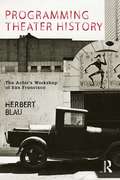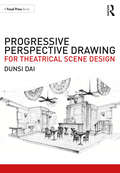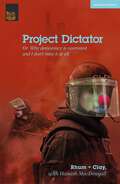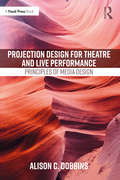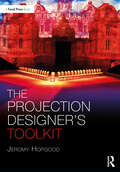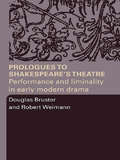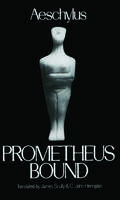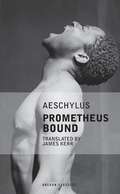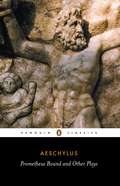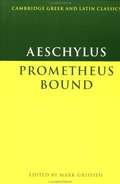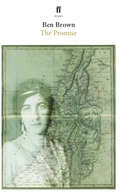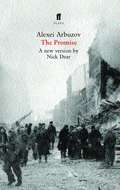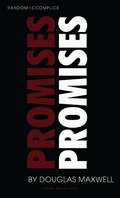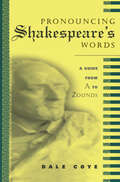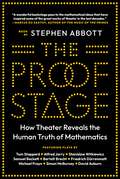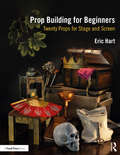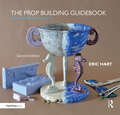- Table View
- List View
Programming Theater History: The Actor's Workshop of San Francisco
by Herbert Blau‘One of the great stories of the American theater..., the Workshop not only built an international reputation with its daring choice of plays and nontraditional productions, it also helped launch a movement of regional, or resident, companies that would change forever how Americans thought about and consumed theater.’ – Elin Diamond, from the Introduction Herbert Blau founded, with Jules Irving, the legendary Actor's Workshop of San Francisco, in 1952, starting with ten people in a loft above a judo academy. Over the course of the next 13 years and its hundred or so productions, it introduced American audiences to plays by Brecht, Beckett, Pinter, Genet, Arden, Fornes, and various unknown others. Most of the productions were accompanied by a stunningly concise and often provocative programme note by Blau. These documents now comprise, within their compelling perspective, a critique of the modern theatre. They vividly reveal what these now canonical works could mean, first time round, and in the context of 1950s and 60s American culture, in the shadow of the Cold War. Programming Theater History curates these notes, with a selection of the Workshop's incrementally artful, alluring programme covers, Blau's recollections, and evocative production photographs, into a narrative of indispensable artefacts and observations. The result is an inspiring testimony by a giant of American performance theory and practice, and a unique reflection of what it is to create theatre history in the present.
Progressive Perspective Drawing for Theatrical Scene Design
by Dunsi DaiProgressive Perspective Drawing for Theatrical Scene Design provides theatrical scenic designers with the tools to create quick and precise perspective drawings. The book explores three methods of perspective drawings at progressive skill levels – the Grid Method, the Frame Method, and the Freehand with References Method – allowing scenic designers to build on their drawing technique consistently. Replete with discussions on pencil techniques, step by step instructions, and set sketches from professional set design projects, this volume guides readers from the basics of the cube system to the more challenging freehand drawing. Progressive Perspective Drawing for Theatrical Scene Design is an excellent resource for students of Scene Design, Stage Design, Set Design, Scenography, Stagecraft, and Design for Theatre, as well as an accessible self-study guide for those with an interest in scene design. The book includes access to downloadable pre-made perspective grids, to help readers familiarize themselves with one and two vanishing point grids.
Progressive Perspective Drawing for Theatrical Scene Design
by Dunsi DaiProgressive Perspective Drawing for Theatrical Scene Design provides theatrical scenic designers with the tools to create quick and precise perspective drawings. The book explores three methods of perspective drawings at progressive skill levels – the Grid Method, the Frame Method, and the Freehand with References Method – allowing scenic designers to build on their drawing technique consistently. Replete with discussions on pencil techniques, step by step instructions, and set sketches from professional set design projects, this volume guides readers from the basics of the cube system to the more challenging freehand drawing. Progressive Perspective Drawing for Theatrical Scene Design is an excellent resource for students of Scene Design, Stage Design, Set Design, Scenography, Stagecraft, and Design for Theatre, as well as an accessible self-study guide for those with an interest in scene design. The book includes access to downloadable pre-made perspective grids, to help readers familiarize themselves with one and two vanishing point grids.
Project Dictator: or 'Why Democracy is Overrated and I Don't Miss It At All' (Modern Plays)
by Rhum + ClayIt's time you realised that your show is a thing of the past. It's dead. A fragment of history. This is the future and I need you to come on board.Their choice? To die onstage - or off it.Beautiful and bonkers - it's the clown show about totalitarianism you never knew you needed. Rhum + Clay's Project Dictator was informed and inspired by conversations with international artists living under authoritarian regimes. It returned for a UK tour after critically-acclaimed runs at New Diorama Theatre in April 2022, and at Edinburgh Fringe Festival in August 2022.Originally commissioned by New Diorama Theatre for its 10th Anniversary Season, Project Dictator was also supported using public funding from Arts Council England. This edition was published to coincide with the UK tour starting in September 2023.
Project Dictator: or 'Why Democracy is Overrated and I Don't Miss It At All' (Modern Plays)
by Rhum + ClayIt's time you realised that your show is a thing of the past. It's dead. A fragment of history. This is the future and I need you to come on board.Their choice? To die onstage - or off it.Beautiful and bonkers - it's the clown show about totalitarianism you never knew you needed. Rhum + Clay's Project Dictator was informed and inspired by conversations with international artists living under authoritarian regimes. It returned for a UK tour after critically-acclaimed runs at New Diorama Theatre in April 2022, and at Edinburgh Fringe Festival in August 2022.Originally commissioned by New Diorama Theatre for its 10th Anniversary Season, Project Dictator was also supported using public funding from Arts Council England. This edition was published to coincide with the UK tour starting in September 2023.
Projection Design for Theatre and Live Performance: Principles of Media Design
by Alison C. DobbinsProjection Design for Theatre and Live Performance explores the design and creation process of projections from a non-technical perspective, examining the principles of media for the stage in a manner that is accessible for both beginning designers and advanced designers dabbling in projections for the first time. This introductory text covers concepts and tools for designing, techniques to help readers tap into their creativity, and the core skills required of this field: problem solving, project management, and effective communication. Focusing exclusively on design and creativity, this book encourages individuals to leap into the creative design process before facing any perceived hurdles of learning everything technical about media delivery systems, cueing systems, projectors, cables, computer graphics, animation, and video production. Projection Design for Theatre and Live Performance is a reminder that, from the invention of photography to the enormous variety of electronic media that exist today, the ways projection designers can enhance a theatrical production are limitless. Written in an accessible style, this book is a valuable resource for students of Projection Design as well as emerging professionals. Its focus on design and creativity will restore the confidence of individuals who may have been daunted by technical hurdles and will encourage the creativity of those who may have been disappointed with their efforts in this field of design in the past.
Projection Design for Theatre and Live Performance: Principles of Media Design
by Alison C. DobbinsProjection Design for Theatre and Live Performance explores the design and creation process of projections from a non-technical perspective, examining the principles of media for the stage in a manner that is accessible for both beginning designers and advanced designers dabbling in projections for the first time. This introductory text covers concepts and tools for designing, techniques to help readers tap into their creativity, and the core skills required of this field: problem solving, project management, and effective communication. Focusing exclusively on design and creativity, this book encourages individuals to leap into the creative design process before facing any perceived hurdles of learning everything technical about media delivery systems, cueing systems, projectors, cables, computer graphics, animation, and video production. Projection Design for Theatre and Live Performance is a reminder that, from the invention of photography to the enormous variety of electronic media that exist today, the ways projection designers can enhance a theatrical production are limitless. Written in an accessible style, this book is a valuable resource for students of Projection Design as well as emerging professionals. Its focus on design and creativity will restore the confidence of individuals who may have been daunted by technical hurdles and will encourage the creativity of those who may have been disappointed with their efforts in this field of design in the past.
The Projection Designer’s Toolkit (The Focal Press Toolkit Series)
by Jeromy HopgoodThe Projection Designer’s Toolkit is an insider’s guide to the world of professional projection design, serving as a reference for the planning and execution of each step in the projection design process. The text addresses the design process within the context of a professional projection designer’s workflow, focusing on specific tools of the trade, best practices for communicating your design to collaborators, tips and tricks, determining budget, working with assistants, and more. Featuring interviews with some of the top names in the industry, the book offers an unprecedented insight into the professional projection designer’s process across a wide range of fields, from Broadway and regional theatre to corporate design and music touring. The book also includes in-depth discussion on production process, system design, cue and content planning, content design, digital media fundamentals, media servers, video equipment, and projection surfaces. Additionally, it features hundreds of full-color photos and examples of designer artifacts such as draftings, mock-ups, paperwork, cue sheets, and renderings. Filled with practical advice that will guide readers from landing their first job all the way through opening night and beyond, The Projection Designer’s Toolkit is the perfect resource for emerging projection designers and students in Digital Media Design and Projection Design courses.
The Projection Designer’s Toolkit (The Focal Press Toolkit Series)
by Jeromy HopgoodThe Projection Designer’s Toolkit is an insider’s guide to the world of professional projection design, serving as a reference for the planning and execution of each step in the projection design process. The text addresses the design process within the context of a professional projection designer’s workflow, focusing on specific tools of the trade, best practices for communicating your design to collaborators, tips and tricks, determining budget, working with assistants, and more. Featuring interviews with some of the top names in the industry, the book offers an unprecedented insight into the professional projection designer’s process across a wide range of fields, from Broadway and regional theatre to corporate design and music touring. The book also includes in-depth discussion on production process, system design, cue and content planning, content design, digital media fundamentals, media servers, video equipment, and projection surfaces. Additionally, it features hundreds of full-color photos and examples of designer artifacts such as draftings, mock-ups, paperwork, cue sheets, and renderings. Filled with practical advice that will guide readers from landing their first job all the way through opening night and beyond, The Projection Designer’s Toolkit is the perfect resource for emerging projection designers and students in Digital Media Design and Projection Design courses.
Prologues to Shakespeare's Theatre: Performance and Liminality in Early Modern Drama
by Douglas Bruster Robert WeimannThis eye-opening study draws attention to the largely neglected form of the early modern prologue. Reading the prologue in performed as well as printed contexts, Douglas Bruster and Robert Weimann take us beyond concepts of stability and autonomy in dramatic beginnings to reveal the crucial cultural functions performed by the prologue in Elizabethan England.While its most basic task is to seize the attention of a noisy audience, the prologue's more significant threshold position is used to usher spectators and actors through a rite of passage. Engaging competing claims, expectations and offerings, the prologue introduces, authorizes and, critically, straddles the worlds of the actual theatrical event and the 'counterfeit' world on stage. In this way, prologues occupy a unique and powerful position between two orders of cultural practice and perception.Close readings of prologues by Shakespeare and his contemporaries, including Marlowe, Peele and Lyly, demonstrate the prologue's role in representing both the world in the play and playing in the world. Through their detailed examination of this remarkable form and its functions, the authors provide a fascinating perspective on early modern drama, a perspective that enriches our knowledge of the plays' socio-cultural context and their mode of theatrical address and action.
Prologues to Shakespeare's Theatre: Performance and Liminality in Early Modern Drama
by Douglas Bruster Robert WeimannThis eye-opening study draws attention to the largely neglected form of the early modern prologue. Reading the prologue in performed as well as printed contexts, Douglas Bruster and Robert Weimann take us beyond concepts of stability and autonomy in dramatic beginnings to reveal the crucial cultural functions performed by the prologue in Elizabethan England.While its most basic task is to seize the attention of a noisy audience, the prologue's more significant threshold position is used to usher spectators and actors through a rite of passage. Engaging competing claims, expectations and offerings, the prologue introduces, authorizes and, critically, straddles the worlds of the actual theatrical event and the 'counterfeit' world on stage. In this way, prologues occupy a unique and powerful position between two orders of cultural practice and perception.Close readings of prologues by Shakespeare and his contemporaries, including Marlowe, Peele and Lyly, demonstrate the prologue's role in representing both the world in the play and playing in the world. Through their detailed examination of this remarkable form and its functions, the authors provide a fascinating perspective on early modern drama, a perspective that enriches our knowledge of the plays' socio-cultural context and their mode of theatrical address and action.
Prometheus Bound (Greek Tragedy in New Translations)
by AeschylusFor readers accustomed to the relatively undramatic standard translations of Prometheus Bound, this version by James Scully, a poet and winner of the Lamont Poetry Prize, and C. John Herington, one of the world's foremost Aeschylean scholars, will come as a revelation. Scully and Herington accentuate the play's true power, drama, and relevance to modern times. Aeschylus originally wrote Prometheus Bound as part of a tragic trilogy, and this translation is unique in including the extant fragments of the companion plays.
Prometheus Bound: Translated From The Greek (classic Reprint) (Greek Tragedy in New Translations)
by AeschylusFor readers accustomed to the relatively undramatic standard translations of Prometheus Bound, this version by James Scully, a poet and winner of the Lamont Poetry Prize, and C. John Herington, one of the world's foremost Aeschylean scholars, will come as a revelation. Scully and Herington accentuate the play's true power, drama, and relevance to modern times. Aeschylus originally wrote Prometheus Bound as part of a tragic trilogy, and this translation is unique in including the extant fragments of the companion plays.
Prometheus Bound (Oberon Modern Plays)
by James KerrHigh in the Caucasus at the ends of the earth, Prometheus is chained to a rock with a bolt through his chest. He talks of a secret that should not be told for fear of its power being lost. This secret is so important that its secrecy could be our salvation. Prometheus Bound is a play veiled in myth, but as unearthly as the play seems it presents the human condition in a more uncomfortably naked state than any other play. Linguistically and thematically it is the most sophisticated and brutal of all the tragedies. On the page it invites deep analysis but on its feet it becomes the very thing that theatre should be: a journey to the heart.
Prometheus Bound and Other Plays: Persians, Seven Against Thebes, Fragments, Prometheus Bound
by AeschylusAeschylus (525–456 BC) brought a new grandeur and epic sweep to the drama of classical Athens, raising it to the status of high art. In Prometheus Bound the defiant Titan Prometheus is brutally punished by Zeus for daring to improve the state of wretchedness and servitude in which mankind is kept. The Suppliants tells the story of the fifty daughters of Danaus who must flee to escape enforced marriages, while Seven Against Thebes shows the inexorable downfall of the last members of the cursed family of Oedipus. And The Persians, the only Greek tragedy to deal with events from recent Athenian history, depicts the aftermath of the defeat of Persia in the battle of Salamis, with a sympathetic portrayal of its disgraced King Xerxes.Philip Vellacott’s evocative translation is accompanied by an introduction, with individual discussions of the plays, and their sources in history and mythology.
Prometheus Bound (PDF)
by Aeschylus Mark GriffithThe myth of fire stolen from the gods appears in many pre-industrial societies. In Greek culture Prometheus the fire-stealer figures prominently in the poems of Hesiod, but in Prometheus Bound Hesiod's morality tale has been transformed into a drama of tragic tone and proportions. In the introduction, Mark Griffith examines how the dramatist has achieved this transformation, looking at the play from all angles - plot and characters, dramatic technique, style and metre. He includes a short section on the production of the play and on the questions of authenticity and date. The commentary guides the reader through problems of language, metre and content. An important feature of this volume is the appendix, which gathers together the existing fragments of the other two plays in the supposed Prometheus trilogy, quoting them in full in the original language and in translation, with short accompanying commentary. This is suitable for undergraduates and students in the upper forms of schools. It also deserves the serious attention of scholars. The introduction requires no knowledge of Greek and will interest students of drama and literature in other cultures too.
The Promise
by Ben BrownIt's the beginning of World War I and Herbert Samuel - the first practicing Jew ever to sit in a British Cabinet - dreams of using British power to back a return of the Jews to Palestine after 1800 years. However, his cousin, Edwin Montagu - also in the Cabinet - is implacably opposed to the idea, a conflict complicated by Montagu's passion for the beautiful aristocrat, Venetia Stanley, a confidante of the Prime Minister, Herbert Asquith.Politics, religion and love collide with world-changing effect in this new play of political and sexual intrigue, and the origins of Israel.The Promise premiered at the Orange Tree Theatre in February 2010.
The Promise
by Nick DearIn the savage 1942 winter siege of Leningrad, as the Russians fight off the Nazi invaders, three teenagers - Lika, Marat and Leondik - are thrown together. Losing everything from their past, they forge a new love that binds them and a new hope which keeps them alive: the promise of a better future.Arbuzov's classic of the 1960s is revived here in Nick Dear's stunning adaptation for the Tricycle Theatre, London in 2002.
Promises Promises (Oberon Modern Plays Ser.)
by Douglas MaxwellGiven her disreputable past, retired teacher Maggie Brodie knows she was a last minute choice for supply cover. Being patronised by the idiotic young headmaster is an indignity she can just about endure. But her frustrations increase when a silent Somalian child in her class, whom Maggie is inexplicably drawn to, is believed by her family and community to be possessed. Maggie seems to be the only one who is outraged and protective of the girl. And if they don’t listen to her, she will be forced to take action. Drastic action.
Pronouncing Shakespeare's Words
by Dale CoyeFirst published in 2003. Routledge is an imprint of Taylor & Francis, an informa company.
Pronouncing Shakespeare's Words: A Guide From A To Zounds
by Dale CoyeFirst published in 2003. Routledge is an imprint of Taylor & Francis, an informa company.
The Proof Stage: How Theater Reveals the Human Truth of Mathematics
by Stephen AbbottHow playwrights from Alfred Jarry and Samuel Beckett to Tom Stoppard and Simon McBurney brought the power of abstract mathematics to the human stageThe discovery of alternate geometries, paradoxes of the infinite, incompleteness, and chaos theory revealed that, despite its reputation for certainty, mathematical truth is not immutable, perfect, or even perfectible. Beginning in the last century, a handful of adventurous playwrights took inspiration from the fractures of modern mathematics to expand their own artistic boundaries. Originating in the early avant-garde, mathematics-infused theater reached a popular apex in Tom Stoppard’s 1993 play Arcadia. In The Proof Stage, mathematician Stephen Abbott explores this unlikely collaboration of theater and mathematics. He probes the impact of mathematics on such influential writers as Alfred Jarry, Samuel Beckett, Bertolt Brecht, and Stoppard, and delves into the life and mathematics of Alan Turing as they are rendered onstage. The result is an unexpected story about the mutually illuminating relationship between proofs and plays—from Euclid and Euripides to Gödel and Godot.Theater is uniquely poised to discover the soulful, human truths embedded in the austere theorems of mathematics, but this is a difficult feat. It took Stoppard twenty-five years of experimenting with the creative possibilities of mathematics before he succeeded in making fractal geometry and chaos theory integral to Arcadia’s emotional arc. In addition to charting Stoppard’s journey, Abbott examines the post-Arcadia wave of ambitious works by Michael Frayn, David Auburn, Simon McBurney, Snoo Wilson, John Mighton, and others. Collectively, these gifted playwrights transform the great philosophical upheavals of mathematics into profound and sometimes poignant revelations about the human journey.
Prop Building for Beginners: Twenty Props for Stage and Screen
by Eric HartProp Building for Beginners outlines the basic concepts of prop building by featuring step-by-step instructions to create twenty of the most commonly featured items in theatrical and filmed productions. This book uses a combination of projects to expose readers to a wide range of materials and tools that they might find in a basic scenery or costume shop, serving both as a guide to building simple props and as a crash course in the variety of items a props person may have to build. The projects require a variety of tools, techniques, and materials so that a practitioner who completes all of them will have received a complete introduction to the basics of prop building. Assuming no previous knowledge of prop building, this is the perfect primer for students, hobbyists, or community theater enthusiasts looking to enter the prop shop. Prop Building for Beginners includes access to full-scale printable versions of the patterns featured in the book.
The Prop Building Guidebook: For Theatre, Film, and TV
by Eric HartExperienced prop maker Eric Hart walks readers through techniques used in historical and contemporary prop making and demonstrates how to apply them to a variety of materials. Hundreds of full-color photographs illustrate the tools and techniques used by professional prop makers throughout the entertainment industry. New features to the second edition include: Updated information on the latest tools and materials used in prop making Both metric and standard measuring units Step-by-step photos on common techniques such as upholstery, mold making, and faux finishing Expanded coverage of thermoplastics, foam, and water-based coatings
The Prop Building Guidebook: For Theatre, Film, and TV
by Eric HartExperienced prop maker Eric Hart walks readers through techniques used in historical and contemporary prop making and demonstrates how to apply them to a variety of materials. Hundreds of full-color photographs illustrate the tools and techniques used by professional prop makers throughout the entertainment industry. New features to the second edition include: Updated information on the latest tools and materials used in prop making Both metric and standard measuring units Step-by-step photos on common techniques such as upholstery, mold making, and faux finishing Expanded coverage of thermoplastics, foam, and water-based coatings
